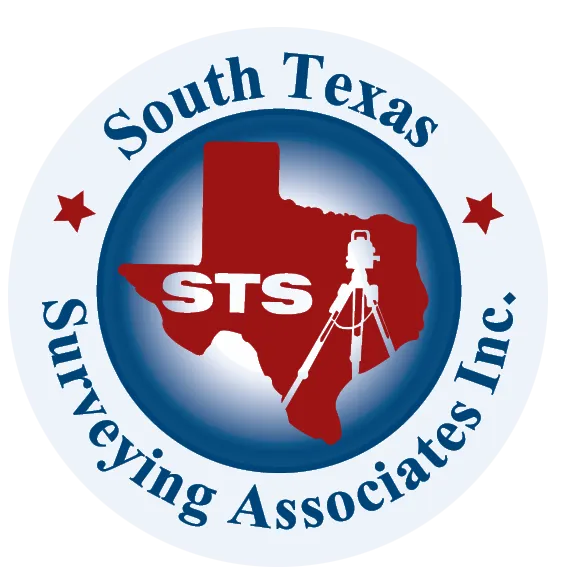Surveying Texas Since 1980 Family Owned, Customer Devoted | Firm #10045400 | 281-556-6918
See Our Latest Blogs

What Is Platting? Understanding Its Role in Land Development
"Texas, often referred to as the Lone Star State, is a thriving hub for economic growth and innovation, making it an attractive destination for commercial real estate investment." - Chris Evans
What Is Platting and Why Is It Essential for Land Development?
The Importance of Platting in Real Estate and Land Development
When it comes to real estate development, buying property, or making improvements to land, understanding platting is crucial. Platting is the process of legally mapping out land divisions to create officially recognized lots, streets, and infrastructure plans.
Whether you’re a homeowner looking to divide a property, a real estate investor purchasing undeveloped land, or a developer planning a commercial or residential project, platting ensures that your land complies with legal regulations and is suitable for construction.
Without proper platting, property owners risk legal complications, disputes over land boundaries, and potential restrictions on development projects.
What Is Platting?
Platting is the formal process of dividing or combining land into legal lots or parcels. It involves creating an official plat map, which is a detailed survey drawing that defines:
Lot boundaries and dimensions.
Public access roads and easements.
Zoning classifications and land-use restrictions.
Drainage, flood zones, and infrastructure plans.
Once a plat is approved and recorded, it becomes a legally binding document that ensures landowners, developers, and local governments understand how the land is organized and regulated.
Why Is Platting Needed?
Platting plays a vital role in real estate transactions, land development, and infrastructure planning. Without a legally recorded plat, property owners may face issues with construction permits, title disputes, and legal roadblocks when selling or developing land.
1. Establishing Legal Property Boundaries
One of the primary reasons for platting is to clearly define property boundaries. Whether you’re subdividing land for residential use or merging lots for a commercial project, a plat ensures that legal property descriptions match real-world conditions.
Prevents boundary disputes with neighboring properties.
Ensures that deeds, mortgages, and title records accurately reflect land divisions.
Helps municipalities track land ownership and development.
2. Meeting Zoning and Land-Use Regulations
Every city or county has zoning laws that dictate how land can be used. Platting helps property owners comply with:
Setback requirements for buildings.
Density limits for residential and commercial developments.
Restrictions on land use, such as green space or mixed-use planning.
Without a properly recorded plat, permits for new construction or redevelopment can be delayed or denied.
3. Ensuring Access to Roads and Utilities
For land to be developed or sold, it must have legal access to:
Public roads or private driveways.
Utility connections (water, electricity, sewer, gas).
Stormwater drainage and flood management systems.
Platting ensures that all lots have the necessary infrastructure in place before development begins.
4. Subdividing or Combining Land for Development
Platting is required when:
A landowner wants to divide property into smaller lots for resale or development.
A developer is planning a subdivision, mixed-use project, or commercial complex.
Multiple parcels are being combined into a single lot for a larger project.
Platting provides a clear legal framework to avoid future complications in ownership, land use, and infrastructure planning.
5. Securing Financing and Title Insurance
Lenders and title companies often require a recorded plat before approving financing for a property. Without an approved plat:
Lenders may deny loans for land purchases or construction.
Title insurance policies may not cover disputed boundaries or easements.
Buyers may face legal risks if property descriptions do not match official records.
Having an official plat protects both property owners and financial institutions from unnecessary legal and financial risks.
The Platting Process: How It Works
Platting is a multi-step process that involves land surveying, city or county approvals, and legal documentation. Here’s how it typically works:
Step 1: Conducting a Land Survey
A licensed land surveyor prepares a detailed map of the property, documenting:
✔ Property boundaries.
✔ Topography and elevation changes.
✔ Existing roads, utilities, and easements.
Step 2: Submitting a Plat Application
Property owners or developers submit the proposed plat to the local government for approval. This process ensures that the plat complies with:
✔ Zoning laws and building codes.
✔ Infrastructure and utility planning.
✔ Public road access requirements.
Step 3: City or County Approval
The plat undergoes review by city planners, engineers, and zoning boards. This step may involve:
✔ Public hearings for major subdivisions.
✔ Revisions based on local development requirements.
✔ Official approval and recording of the final plat.
Step 4: Recording the Plat with the County
Once approved, the plat is filed with the county records office, making it a legally recognized document. At this point, property lots can be:
✔ Sold individually.
✔ Developed for residential or commercial use.
✔ Used for obtaining construction permits.
When Is Platting Not Required?
In some cases, platting may not be necessary, such as:
When a property has already been legally recorded as a single lot.
If there are no changes to existing lot boundaries.
When making minor adjustments that can be handled with an amending plat.
However, if there’s any uncertainty about whether platting is needed, it’s best to consult a professional land surveyor or local planning office.
Why Professional Land Surveying is Critical for Platting
Platting is a legal process that requires precision. A professional land surveyor ensures that:
✔ All property boundaries are accurately measured and documented.
✔ Plats comply with zoning, setback, and infrastructure requirements.
✔ Easements and rights-of-way are correctly identified.
✔ Developers avoid costly delays and legal disputes.
Working with a licensed land surveyor guarantees that your plat is legally valid and properly recorded, allowing for smooth transactions, development approvals, and property sales.
📞 Need a land survey for platting? Contact South Texas Surveying today for expert guidance and accurate property assessments.
Why Platting Matters for Every Property Owner
Platting isn’t just a bureaucratic step—it’s an essential part of real estate and land development. Whether you’re subdividing land, developing a commercial project, or ensuring your property boundaries are legally documented, a properly recorded plat protects your investment, property rights, and future development plans.
✔ Establishes clear legal property boundaries.
✔ Ensures compliance with zoning and land-use laws.
✔ Provides legal access to roads, utilities, and drainage systems.
✔ Prevents title disputes and financing delays.
📞 Looking to plat a property? Contact South Texas Surveying today for professional surveying and platting services you can trust.
Delivering Land Surveys with Attention to Detail
George Owens
Commercial Broker

I have worked with many surveying companies, but South Texas Surveying stands out for their exceptional professionalism, attention to detail, and commitment to their clients.
Kim Wexler
Project Manager

Their accurate and thorough surveys make my job a lot easier, their ability to communicate effectively with all parties involved is commendable. I highly recommend South Texas Surveying.
James Cart
Homeowner

As a new homeowner, I was thoroughly impressed with the professional service provided by South Texas Surveying. I high recommend their services to any one buying a home in Houston.
Contact Us
Email: [email protected]
Office Address: 11281 Richmond Ave
BLDG J, Suite 101,
Houston, TX 77082
Office Hours: Mon – Fri 8:00am – 5:00pm
Office Phone Number: 281-556-6918
11281 Richmond Ave
BLDG J, Suite 101,
Houston, TX 77082
Firm Number: 10045400
Resources
© Copyright 2024 South Texas Surveying Associates
